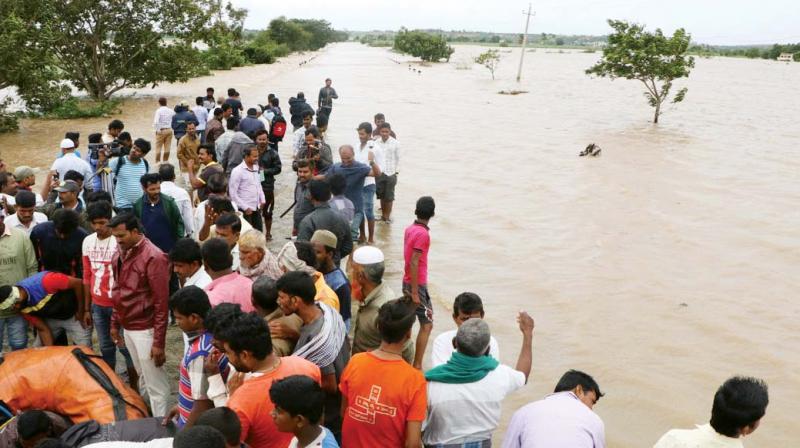Floods, an unavoidable part of development?
Well, to begin with, there are several causes of floods and they differ across geographical regions.

Floods are becoming a very common occurrence in India every monsoon. The floods, and intermittent spells of droughts especially in Karnataka & Maharashtra need to be taken as a terrible lesson that we need to learn. And well, this lesson also needs to be learnt by other states like Gujarat, Odisha, Assam, West Bengal, etc., which have also witnessed similar ecological disaster, if not worse.
Besides the toll on humans, the floods have caused considerable damage to the forest, soil, animals, infrastructure and the overall environmental quality. Against this backdrop, it is extremely necessary and pertinent to understand the causes of recurrent floods, their impact on social, economic and ecological systems and the steps to mitigate the impact as well as to avoid their recurrence in future.
Well, to begin with, there are several causes of floods and they differ across geographical regions. And the causes are different and they vary from rural to urban areas. But on the whole some of the major causes of floods in India can be attributed to some of the anthropogenic issues: erratic and heavy rainfall or downpour; extensive and rampant changes in land-use and land-cover pattern; deforestation and habitat-loss; unscientific execution of environmentally destructive projects in ecologically sensitive areas; and most importantly, environmental illiteracy and ignorance. These are the key factors that are responsible towards repeated occurrences of floods and droughts, even in the most unassuming of regions across the country. Though sudden and heavy rainfall is still the primary cause for floods in India, their repeated occurrence is matter of concern. In fact rainfall in a short span of time is of greater concern since they lead to flash-floods. For ex: In 2018, Kerala received the heaviest rainfall in over 75 years but the damage to humans and environment was maximum in 2018. This is a clear case of unregulated and unscientific human intervention in ecologically sensitive areas. In addition to this, another important reason is the heavy siltation of river beds which reduces the carrying capacity of the rivers and streams and finally leading to flooding of areas in the surrounding. The Rivers in the Western Ghats are classic examples of siltation as a result of which the rivers have started expanding, anywhere between 2.0 to 4.0 kms and eventually leading to frequent flooding.
In addition to heavy rainfall and siltation of river beds, another major reason for floods, especially in the mountains and hilly regions are the landslides and landslips. These landslides are also responsible in partial or complete blockage streams and rivers which eventually cause major floods. However, in urban areas the main reasons for floods are the encroachment of water-bodies and blockage of drains. The classic examples are flooding in Bangalore in 2017 & previously in Chennai in 2015. This is mostly due to the failure of the drainage system to manage the storm-water.
It’s not enough if we just talk about floods and its repeated occurrences. These floods, in addition to affecting our environment, also cause immense damage to agriculture, which is of greater concern today. The agricultural fields get submerged leading reduced harvest and eventually increasing the vulnerability of farmers to indebtedness. Apart from the farming community the common man is also hit hard due to persistent inflation.
Additionally, the floods also affect the characteristic features of the surface & sub-surface soil and sometimes render them infertile due to erosion of top-layer.
On one hand, it looks like the situation is going beyond control. But on the other hand we can definitely mitigate and reduce this problem if we can be a little more sensitive to our environment and ecology.

